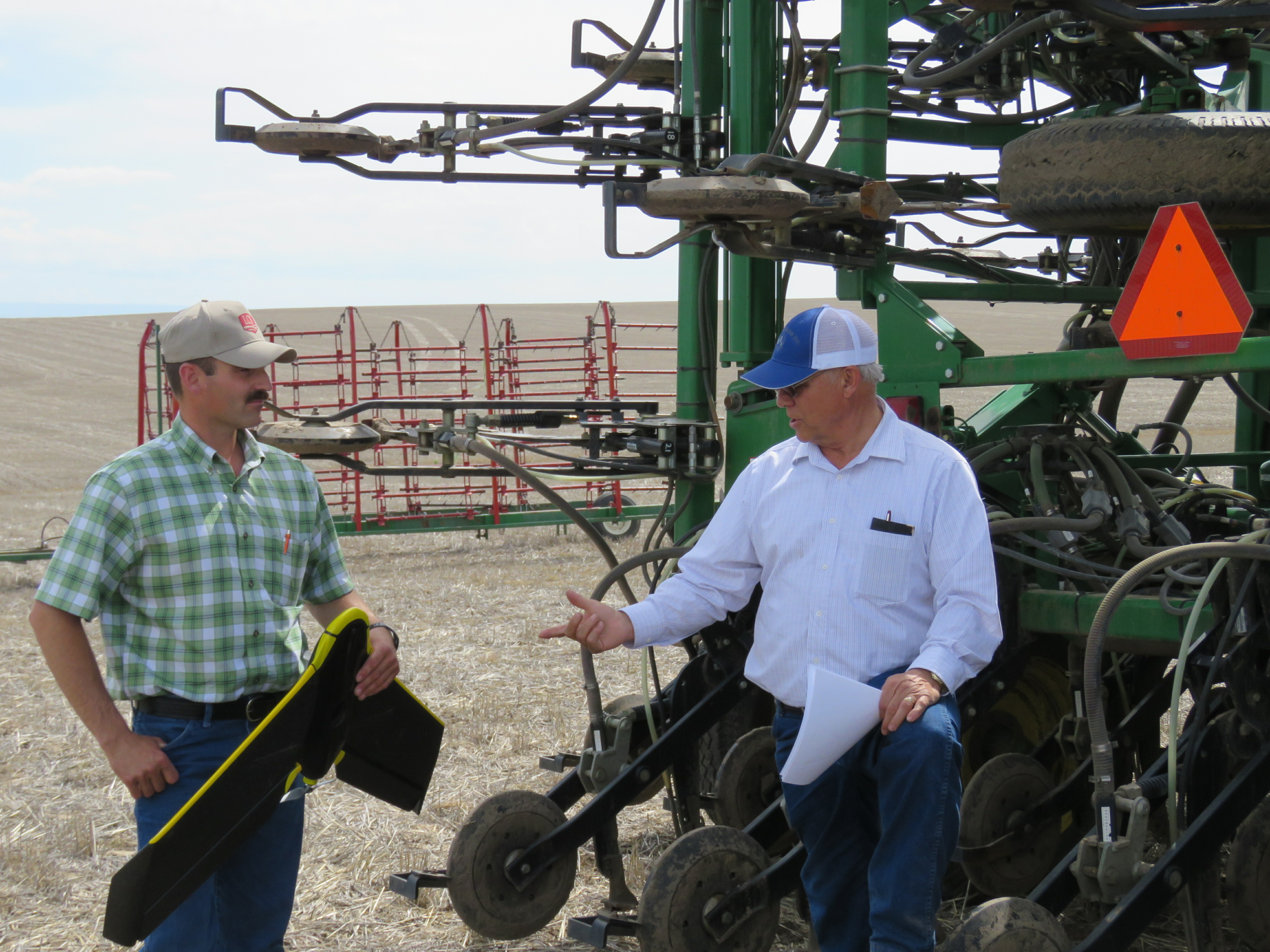Profiling U.S. Wheat Sustainability: Bob Johns, Soft White Wheat Farmer
By Emily McGarry, USW Policy Intern
Bob Johns farms in northeast Oregon, and he would tell you that he’s been farming since the day he was born. Johns’ 5,000-acre farm has been in the family since 1873, but he is ready to retire soon. Since there is no family to take over, he is handing the reins to his business partner, Chris Williams, a long-time family friend who began working summers for Johns when he was in high school.
“I have been around agricultural stuff my whole life,” said Williams. “I am fascinated with starting with a bare piece of ground, seeing what you can grow and watching it progress through the season.”
Together, Johns and Williams grow wheat, green peas and alfalfa. They make sustainability a priority on the farm through no-till practices, clean water programs and new farming technology.
“Farming is my life and it’s what I’ve always wanted to do — I never thought of doing anything else,” said Johns. “My father’s life was farming and he passed that on to me. I hope to pass it on to my business partner, Chris.”
Johns is the fifth of six U.S. wheat farmers featured in USW’s series on wheat sustainability. He manages regional agricultural nuances by adapting his practices to be sustainable for his region’s soil and environmental conditions. Part of that also includes planning for the future and a non-traditional transition so that his farm business is still successful for years to come.
“Chris loves the land,” said Johns. “He keeps me on the cutting edge and pushes me to look at the latest technology. We are a good team.”
Northeast Oregon is known for its extremely steep farmland, which often requires special equipment and makes soil erosion a challenge. Johns sees wide variation in his soil quality and the amount of rainfall on his farm, so individual fields often require different levels of attention and inputs. In the past, steep slopes on his farm caused erosion. However, in 2011, Johns switched to no-till practices, which has cut his erosion to nearly zero and greatly improved soil health.
In order to protect the region’s natural resources, Johns and Williams also had their farm certified as “salmon-safe,” which means they restrict the products they use on their land that is near water sources. They also grow plants in those areas that increase the biodiversity on their farm and promote beneficial insects and wildlife.
“We value the environment and we value what we’re doing on the ground,” said Johns. “It’s important to us; we don’t just go out without thinking about those things.”
For Johns, this means finding ways to improve practices through new technology and innovation. Last year, Johns and Williams started experimenting with a drone on their farm to see if aerial photos of their fields could give them insight on crop health and stress levels, soil fertility and input requirements.
Johns and Williams are constantly finding new ways to improve the sustainability of their farm, whether through certification opportunities, government programs, or new technology and practices. But the piece that is most important is the plan for transition. Because Johns partnered with Williams, he knows that his farm will be in good hands when he retires — with someone who loves the land as much as he does.
Learn more about John’s and Williams’ farming partnership at www.uswheat.org/factsheets. U.S. farmers, ranchers, fishermen and foresters also share their values, sustainability experiences and conservation practices at the U.S. Sustainability Alliance.


